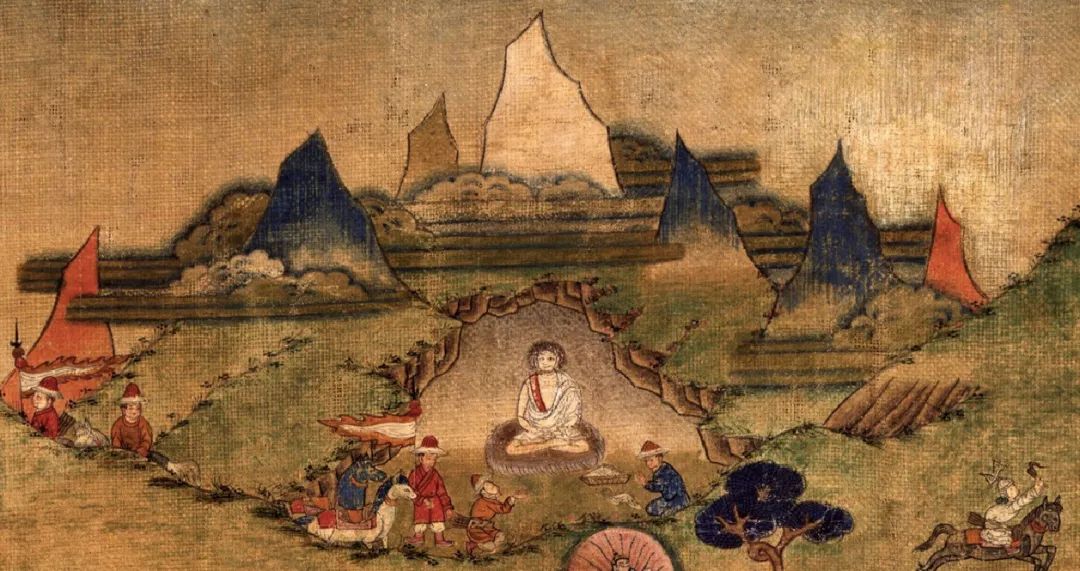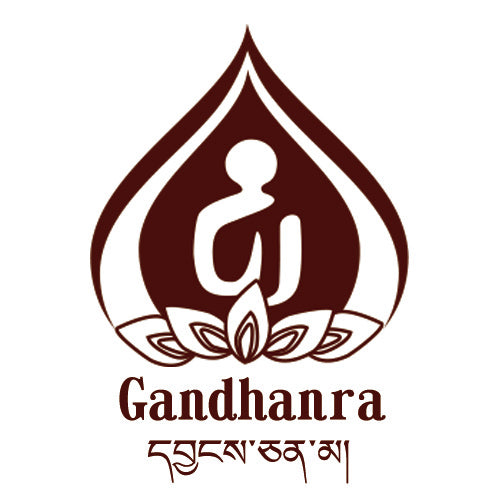
Immerse yourself in the colors of Tibet

"The King of Shambhala"
19th century, Rubin Museum of Art, New York
One of the masterpieces of the Eightfold Path style led by the renowned Rinpoche Situ
A stunning example of color usage
"For the painter, brushwork is the father of craftsmanship, while color is the mother of craftsmanship," said the Eighth Sito Tulku Jigme Dondrub (1699-1774) three hundred years ago, emphasizing the importance of color and color theory in Tibetan aesthetics.
In numerous related Tibetan scriptures, colors not only accurately depict the universe composed of elements, but more importantly, they elucidate specific situations regarding emotional power and religious philosophy. As a medium of transformation, colors immerse us in a world where we seem to gain a deeper understanding of the essence of beauty and the divine than mere "lines and composition".

Milarepa, a revered Tibetan Buddhist figure who practiced in the snow mountains (detail)
18th century, Rubin Museum of Art in New York
White is a central color in native culture
It symbolizes purity and primordial essence

Five-color mountain (partial)
17th century, New York Rubin Museum
The wisdom of the five Buddhas emanates with five-colored light
Within the five-colored light are filled with gemstone particles.

Mount Wutai in Han region (partial)
19th century, Sichuan Museum
Partial from the Thangka set of "King Gesar"
In the indigenous culture of Tibet, the classification and connotations of colors are often associated with specific powers. In the local "egg-born mythology", different worlds are divided by egg colors and imply their respective spiritual attributes. During the Tubo period, the original color concepts were unified and standardized under royal authority.
The ancestors' mountain god with a white body watches over the kingdom, while below, hidden in the dark lakes and waterfalls, lie countless treasures and creatures. The red-clad deity rides a swift horse, parading through the snowy highlands filled with dark-haired people.

Figure 4: Tibetan Quiang Tangla Mountain God (detail)
19th century, Sichuan Museum
One of the ancient Four Mountain Gods
Also one of the nine primordial gods who formed the world

The Waterfall in a Hidden Oasis (Detail)
18th Century, Ruinborough Museum, New York

Zaan, the god of war, riding on a red horse (detail)
19th century, Rubin Museum of New York
Red symbolizes authority and punishment
This fiery primary color has purifying properties.
People use colors to mark history and memories, giving colors a narrative quality. The changing of colors signifies further development in the story plot; the same color can be imbued with vastly different meanings in different contexts. Colors reflect the evolution of human concepts, that is, the colors of civilization.
During the heyday of Buddhism, the traditional meanings of colors indigenous to the region collided and merged with the systematic color theory of Buddhism. Concepts such as "Five Buddhas, Five Colors," "Various colored dakinis," and "Four Noble Truths, Four Colors" began to prevail as a result of this fusion of ideas.

Inner court of the Wufotan City (detail)
19th century, private collection
As the core combination of esoteric Buddhist symbols
The five colors of the Five Buddhas have over a dozen different symbolic meanings.

Lotus Master Rainbow Body (Partial)
19th century, private collection
Rainbow body signifies the completion of Buddhist practice
The rainbow of the hidden land displays five colors

The mudra of Red Tara (partial)
18th century, Rubin Museum of Art, New York

Black background (partial)
In the 17th century, Shelley & Donald Rubin
The art of execution, symbolized by black
Eliminating obstacles with a violent and fierce presence
In the eyes of philosophers, the colors have an incredibly vast family tree and social organization (with nearly twenty different identities), with nearly thirty fixed relationships between different members based on harmony and disharmony; and this theoretical framework deeply influences the development of Tibetan art and aesthetics. Artists are able to obtain technical guidance through the various rules mentioned above, and in the future, they will develop unique insights into color and color combinations.
I believe that not only artists and scholars, but all people who come into contact with Tibetan aesthetics can see the richness of the world within their sight. As the master of the Qingze School, Yixi Danzeng (ཡེ་ཤེས་བསྟན་འཛིན་; 1915-1971) said: "Color is the son of concepts, advocating principles but often surpassing rules. Those who view the painting should focus on it without any distractions."

Buddha light and distant view (part)
Pink represents the "bhikkhuni" in color
Using this color can constrain the power of other colors
When pink meets white or yellow
It will form a friendship relationship

Standing Stone (partial)
Deep blue is one of the seven fathers
Blue and green meet like "thieves" (losing their shine)
Adding hints of yellow and white
Turning them into "brothers"
All things show their colors
This is the first post in the color series.

